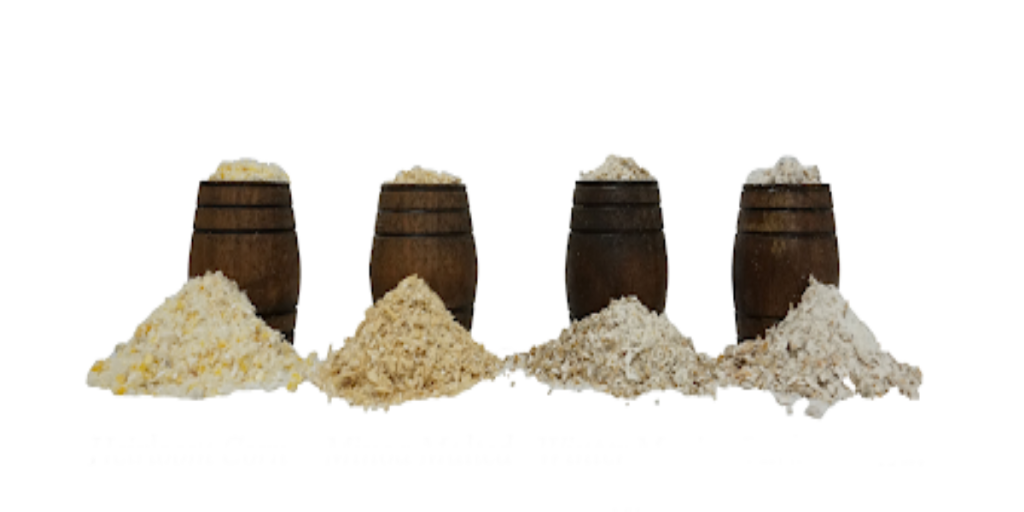Grains, Fruit, and Other Fermentables

Ever wonder where your favorite spirits come from? Or why certain spirits are very popular in certain areas?
Throughout the history of wine, beer, or spirits production, producers have often used what is most readily available. Early farm distilleries therefore would most often ferment surplus crops that were unable to get to the markets in a timely manner. This strategy allowed producers to create a profit center on what might otherwise become waste. Or more specifically a loss in potential net profit. As you can imagine, the shelf life of an alcoholic solution is exponentially longer than the shelf life of the original crop itself.
In Search of… Fermentable Sugars
Regional crops used to make alcohol don’t always have the most sugar, or the most starches to be converted to fermentable sugars. Crops used often simply grow best in that region and therefore can be cultivated and processed with a very good degree of dependability.
A very good, and arguably the most noteworthy example of this is wine or brandy made with grapes. And by that, I mean that of all the fruits used to make wine, grapes do not have the highest sugar (if alcohol yield mattered most?) content. And yet, alcohol made with grapes is by far the most popular fruit used to make wine and brandy. Here in the continental U.S., for example, grapes can be grown in USDA planting zones 4 through 10. Or more simply, just about everywhere. Apples grow best in zones 3 to 9 and peaches for example grow best in zones 6 and 7 as an example.
Let’s Move On to Grains for Whiskey and Beer Production
Scientists believe that wheat was domesticated as a crop 10,000 years ago, corn was domesticated as a crop about 9000 years ago, barley was domesticated as a crop 8000 years ago. Rye dates back 1800 years (and considered a weed back in the day) and oats (also considered a weed) 2000 years. Other grains are millet, spelt, buckwheat, and of course rice. My point here is that grains have been a domesticated crop for a very long time and that it makes perfect sense that someone, somewhere has figured out after all this time how to render alcohol from converting the starches contained in grains into a fermentable modality for self-medicating.
Within each type of grain, there are varieties that do particularly well in specific growing regions and other varieties that do well in multiple regions. Many heirloom varieties of corn, for example, have ended up being forgotten as hardier, more commercially viable varieties have taken over the market space.
So, if we fast forward to the last 10 years or so, we can see some of these old, nearly forgotten, heirloom grain varieties making a comeback as boutique distilleries experiment with their viability to make a truly craft whiskey. These small distilleries struggle and grope to create an identity and differentiate themselves from the large whiskey houses. Additionally, many new distillery owners are proud of their local history and want to preserve the local crop history as a way to educate their customer base and create enthusiasm about their product. A way to install part of the local land into each bottle. In doing so, small, craft distilleries have been able to produce some really interesting whiskies that would otherwise be completely unavailable to consumers. If this sounds familiar, it should; small breweries started this “new “ way of creating new beer choices for consumers two decades after the wine industry here in the U.S. invented itself in the looming shadow of European winemaking giants.
Finally, Onto Sugar Cane for Rum Production
Cane grows best in zones 9 and 10 because it is cold sensitive. Cane juice is nearly a perfect fermentation medium because the fermentable sugar content within the juice usually registers at about 18 or 19 Brix. As luck would have it, Saccharomyces cerevisiae (the most common yeast specimen found in the cane field) happens to thrive best with 18 or 19 Brix. Yeast and cane juice would be a processing match made in heaven were it not for the unforgiving lack of shelf life associated with fresh-pressed cane juice.
The production of each spirit poses its own set of processing challenges, and craft distilleries along with small family farms are up for the challenge to bring consumers the most versatile selection of craft spirits to date.
If you are traveling across the country, please make a point to stop in at any number of small craft distilleries on your travel path. I promise you’ll be wowed by their creativity, as well as impressed with their friendly, warm enthusiasm for the craft.
Silainte
> Shop StillDragon.com for all your distilling equipment and supply needs.